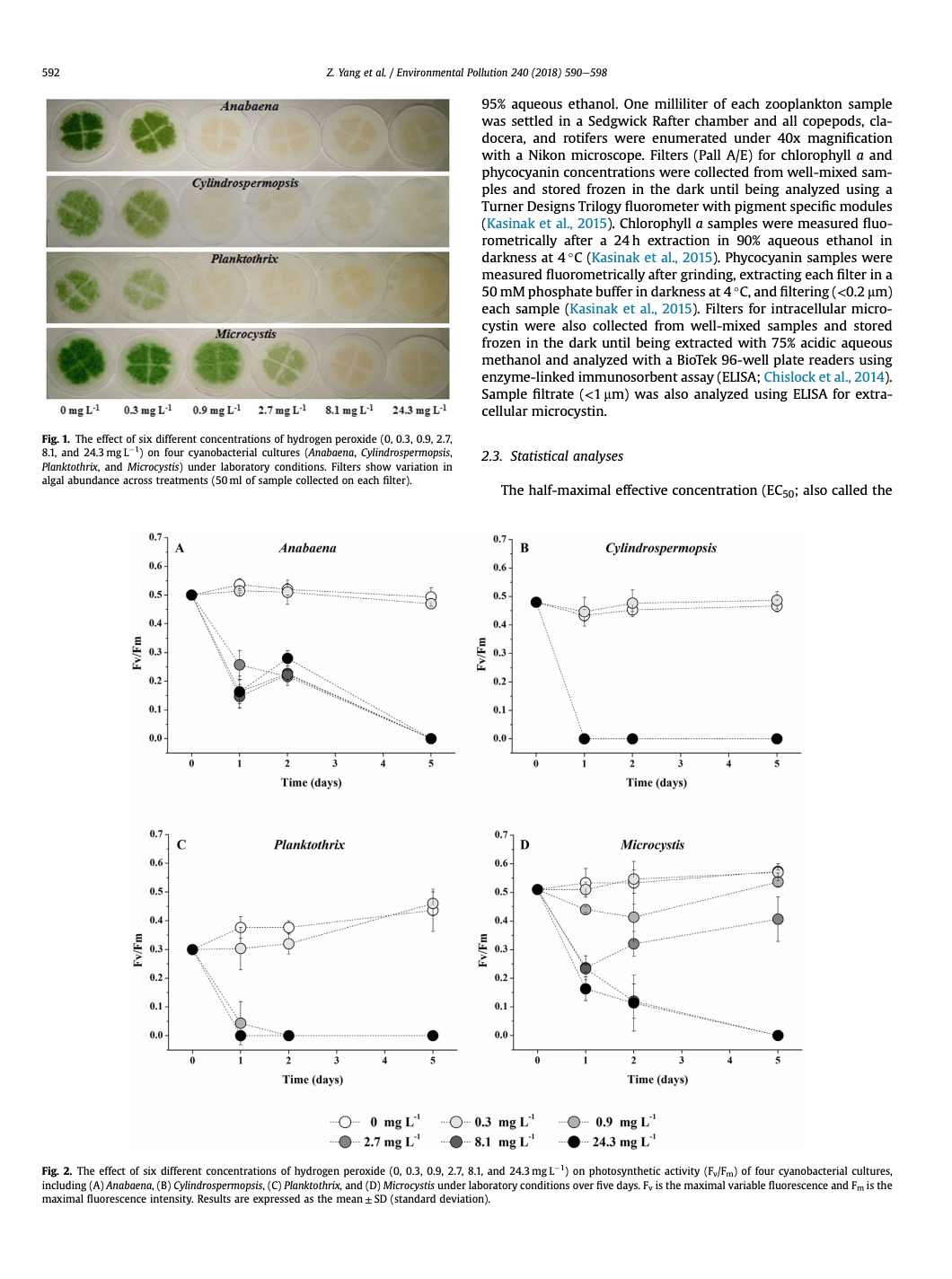Keyword: Green algae

Yang, Z., R. P. Buley, E. G. Fernandez-Figueroa, M. U.G. Barros, S. Rajendran, and A. E. Wilson. 2018. Hydrogen peroxide treatment promotes chlorophytes over toxic cyanobacteria in a hyper-eutrophic aquaculture pond. Environmental Pollution 240:590-598.
Abstract
Controlling blooms of toxigenic phytoplankton, including cyanobacteria, is a high priority for managers of aquatic systems that are used for drinking water, recreation, and aquaculture production. Although a variety of treatment approaches exist, hydrogen peroxide (H2O2) has the potential to be an effective and ecofriendly algaecide given that this compound may select against cyanobacteria while not producing harmful residues. To broadly evaluate the effectiveness of H2O2 on toxigenic phytoplankton, we tested multiple concentrations of H2O2 on (1) four cyanobacterial cultures, including filamentous Anabaena, Cylindrospermopsis, and Planktothrix, and unicellular Microcystis, in a 5-day laboratory experiment and (2) a dense cyanobacterial bloom in a 7-day field experiment conducted in a nutrient-rich aquaculture pond. In the laboratory experiment, half-maximal effective concentrations (EC50) were similar for Anabaena, Cylindrospermopsis, and Planktothrix (average EC50 = 0.41 mg L-1) but were ∼10x lower than observed for Microcystis (EC50 = 5.06 mg L-1). Results from a field experiment in an aquaculture pond showed that ≥1.3 and ≥ 6.7 mg L-1 of H2O2 effectively eliminated Planktothrix and Microcystis, respectively. Moreover, 6.7 mg L-1 of H2O2 reduced microcystin and enhanced phytoplankton diversity, while causing relatively small negative effects on zooplankton abundance. In contrast, 20 mg L-1 of H2O2 showed the greatest negative effect on zooplankton. Our results demonstrate that H2O2 can be an effective, rapid algaecide for controlling toxigenic cyanobacteria when properly dosed.